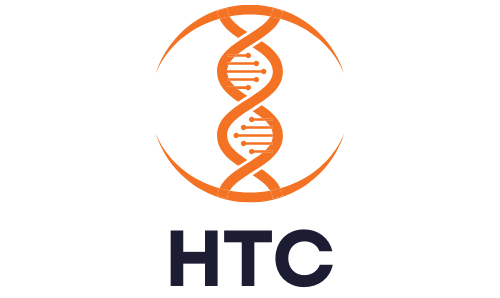Impact of HealthTech Innovations on Patient Care
Digital Health Records (DHR) technology represents one of the most transformative innovations in modern healthcare. As the healthcare industry increasingly transitions from traditional paper-based records to digital systems, the role of DHR has become paramount. This shift is crucial not only for enhancing the efficiency and accuracy of healthcare delivery but also for driving significant investments in HealthTech. The purpose of this blog is to explore the impact of digital health records on HealthTech investments, examining how DHR is reshaping the landscape of healthcare technology and presenting opportunities for investors.
Digital Health Records, also known as Electronic Health Records (EHR) or Electronic Medical Records (EMR), are digital versions of patients' paper charts. They contain comprehensive health information about patients, including medical history, diagnoses, medications, treatment plans, immunization dates, allergies, radiology images, and laboratory test results. DHR systems are designed to streamline the collection, storage, and sharing of health data among healthcare providers, thereby improving the overall quality of care.
Key Components and Technologies Involved in DHR
DHR systems consist of several key components and technologies that enable their functionality. These include:
- Data Entry and Management Tools: These tools facilitate the input and organization of patient data. They include user interfaces, data validation protocols, and data storage solutions.
- Interoperability Standards: Interoperability is crucial for DHR systems to communicate and share information across different healthcare providers. Standards such as HL7, FHIR, and DICOM ensure compatibility and seamless data exchange.
- Security and Privacy Measures: Protecting patient data is paramount. DHR systems employ advanced encryption, access controls, and compliance with regulations like HIPAA to safeguard sensitive information.
- Analytics and Reporting Tools: These tools analyze the vast amounts of data stored in DHR systems, providing insights that can improve patient outcomes and optimize healthcare operations.
Examples of DHR Applications in Healthcare
Digital Health Records are utilized in various healthcare settings, including hospitals, clinics, and private practices. Examples of DHR applications include:
- Patient Portals: Allowing patients to access their health records, schedule appointments, and communicate with healthcare providers online.
- Telemedicine: Enabling remote consultations and follow-ups by providing healthcare providers with access to comprehensive patient data.
- Chronic Disease Management: Facilitating the monitoring and management of chronic conditions through regular data collection and analysis.
- Population Health Management: Aggregating and analyzing data from multiple sources to identify health trends and inform public health strategies.
Benefits of Digital Health Records
The adoption of digital health records offers numerous benefits that enhance the efficiency, accuracy, and quality of healthcare delivery.
DHR systems significantly reduce the risk of errors associated with manual data entry and paper records. They ensure that patient information is accurate, up-to-date, and easily accessible to authorized healthcare providers. This leads to more informed decision-making and better patient outcomes.
DHR systems enable seamless communication and data sharing among healthcare providers. This improves care coordination, particularly for patients with complex medical needs who require services from multiple specialists. It also reduces the likelihood of redundant tests and procedures, saving time and resources.
The implementation of DHR systems can lead to substantial cost savings for healthcare organizations. By streamlining administrative processes and reducing paperwork, DHR systems free up resources that can be redirected to patient care. Additionally, the ability to quickly access and analyze patient data can prevent costly medical errors and improve operational efficiency.
Case Studies of DHR in Healthcare
To illustrate the impact of digital health records on healthcare, let's examine some notable case studies of DHR solutions and their successful implementations.
Case Study 1: Epic Systems Corporation
Epic Systems Corporation is one of the leading providers of DHR systems in the United States. Their comprehensive EHR platform is used by numerous hospitals and healthcare organizations. Epic's system integrates a wide range of functionalities, including patient scheduling, billing, and clinical documentation. The implementation of Epic's EHR has led to significant improvements in patient care coordination, reduced administrative burdens, and enhanced data security.
Case Study 2: Cerner Corporation
Cerner Corporation is another major player in the DHR market. Their EHR solutions are designed to improve clinical workflows and support population health management. Cerner's platforms are known for their interoperability, allowing seamless data exchange between different healthcare systems. The adoption of Cerner's EHR has resulted in better patient outcomes, increased efficiency, and cost savings for healthcare providers.
Case Study 3: Kaiser Permanente
Kaiser Permanente, one of the largest integrated healthcare systems in the United States, has successfully implemented an advanced EHR system across its network. This system enables comprehensive data sharing among Kaiser Permanente's hospitals, clinics, and pharmacies. The result has been improved patient care, reduced duplication of services, and enhanced population health management.
Challenges and Risks
While the benefits of digital health records are substantial, there are also several challenges and risks associated with their adoption.
Potential Challenges and Risks in Adopting DHR
One of the primary challenges in adopting DHR systems is the significant upfront investment required. The costs associated with purchasing, implementing, and maintaining DHR systems can be substantial, particularly for smaller healthcare providers with limited budgets.
Regulatory and Compliance Hurdles
Healthcare providers must navigate a complex regulatory landscape to ensure compliance with data privacy and security standards. Regulations such as the Health Insurance Portability and Accountability Act (HIPAA) in the United States impose strict requirements on the handling of patient data. Non-compliance can result in severe penalties and reputational damage.
Strategies for Overcoming These Challenges
To overcome these challenges, healthcare organizations should consider the following strategies:
- Government Incentives and Grants: Governments can provide financial incentives and grants to support the adoption of DHR systems, particularly for smaller healthcare providers.
- Training and Support: Comprehensive training programs and ongoing support are essential to ensure that healthcare providers can effectively use DHR systems.
- Partnerships with HealthTech Companies: Collaborating with HealthTech companies can help healthcare providers access the latest technologies and expertise in implementing DHR solutions.
Investment Opportunities in DHR
The growing demand for digital health records presents significant investment opportunities in the HealthTech sector.
Identifying Promising DHR Companies and Technologies
Investors should look for companies that offer innovative and scalable DHR solutions. Promising areas include cloud-based EHR platforms, interoperability solutions, and analytics tools that enhance the value of health data.
Factors to Consider When Investing in DHR
When evaluating investment opportunities in DHR, investors should consider factors such as:
- Market Potential: Assess the market size and growth potential of the DHR segment.
- Competitive Advantage: Identify companies with unique technologies or competitive advantages that set them apart from their peers.
- Regulatory Compliance: Ensure that the companies comply with relevant data privacy and security regulations.
Long-term vs. Short-term Investment Strategies
Investors can adopt different strategies based on their investment horizon:
- Long-term Investments: Investing in established companies with a strong track record and significant market share can provide steady returns over the long term.
- Short-term Investments: Identifying emerging startups with innovative solutions and high growth potential can offer substantial short-term gains.
Future Trends and Innovations
The field of digital health records is continuously evolving, driven by technological advancements and changing healthcare needs.
Some of the emerging trends in digital health records include:
- Cloud-based EHR Systems: Cloud-based solutions offer greater scalability, flexibility, and cost-efficiency compared to traditional on-premises systems.
- AI and Machine Learning: AI and machine learning technologies are being integrated into DHR systems to enhance data analysis, predict patient outcomes, and improve decision-making.
- Blockchain Technology: Blockchain offers the potential to enhance data security and interoperability in DHR systems by providing a decentralized and tamper-proof ledger for health data.
Technological advancements are expected to significantly impact the future of digital health records. Innovations such as the Internet of Things (IoT), wearable devices, and telehealth are generating vast amounts of health data that can be integrated into DHR systems, providing a more comprehensive view of patient health.
Over the next decade, we can expect digital health records to become even more integral to healthcare delivery. Key predictions include:
- Increased Adoption: The adoption of digital health records will continue to grow globally, driven by government initiatives, technological advancements, and the increasing recognition of their benefits.
- Enhanced Interoperability: Efforts to improve interoperability will accelerate, enabling seamless data exchange between different healthcare systems and providers.
- Personalized Healthcare: Digital health records will play a crucial role in enabling personalized healthcare by providing detailed patient data that can be used to tailor treatments and interventions.
Conclusion
The impact of digital health records on HealthTech investments is profound, reshaping the healthcare landscape and presenting numerous opportunities for investors. DHR systems offer significant benefits, including improved accuracy and efficiency in healthcare data management, enhanced patient care and coordination, and cost savings.
While there are challenges and risks associated with adopting DHR, strategies such as government incentives, comprehensive training programs, and partnerships with HealthTech companies can help overcome these obstacles. The growing demand for digital health records presents significant investment opportunities, with promising areas including cloud-based EHR platforms, interoperability solutions, and analytics tools.
As technological advancements continue to drive innovation in digital health records, we can expect these systems to become even more integral to healthcare delivery. Increased adoption, enhanced interoperability, and personalized healthcare are key trends that will shape the future of DHR.
In conclusion, the integration of digital health records into healthcare represents a significant step forward in medical science. The ability to create personalized, timely, and efficient care tailored to individual patients’ needs promises to revolutionize patient care. While there are challenges to overcome, including technical, regulatory, and ethical issues, the potential benefits make digital health records a highly attractive area for investment. Companies like Notable Labs are leading the charge in integrating these advanced technologies into standard healthcare practices, demonstrating the profound impact that precision medicine and digital health records can have on improving patient outcomes and making healthcare more efficient and effective.










